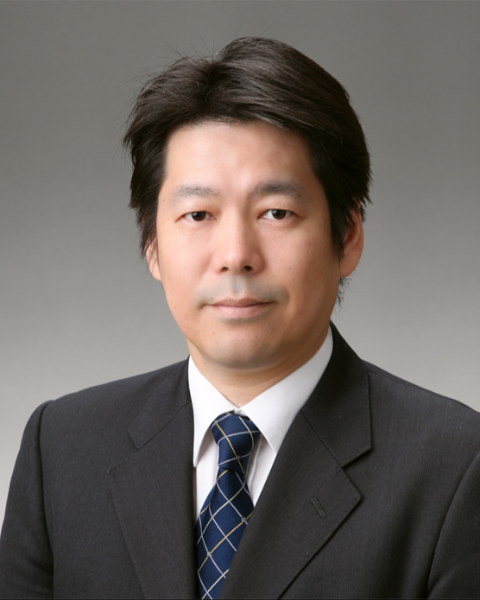SS 12 - GI 1: Esophago-gastric Cancer: Revisiting Radiotherapy, Investigating Immunotherapy, and Mobilizing MRD
166 - Combination of Radiotherapy and Nivolumab for Previously Treated Advanced Gastric Cancer (CIRCUIT Trial): 3-Years Update
Monday, September 30, 2024
8:10 AM - 8:20 AM ET
Location: Room 151

Yoshiyuki Suzuki, MD, PhD
Fukushima Medical University
Fukushima-city, Fukushima
Presenter(s)
Y. Suzuki1, D. Yoshida2, K. Mimura3,4, T. Ogata5, N. Machida6, Y. Yoshimoto1, H. Katoh7, Y. Watanabe8, T. Oshima9, and K. Kono8; 1Department of Radiation Oncology, Fukushima Medical University School of Medicine, Fukushima, Japan, 2Department of Radiation Oncology, Kanagawa Cancer Center, Yokohama, Japan, 3Department of Gastrointestinal Tract Surgery, Fukushima Medical University School of Medicine, Fukushima, Japan, 4Department of Blood Transfusion and Transplantation Immunology, Fukushima Medical University School of Medicine, Fukushima, Japan, 5Department of Gastrointestinal Surgery, Kanagawa Cancer Center, Yokohama, Japan, 6Department of Gastroenterology, Kanagawa Cancer Center, Yokohama, Japan, 7Department of Radiation Oncology, Kanagawa Cancer Center, Yokohama, Japan, 8Department of Gastrointestinal Tract Surgery, Fukushima Medical University, Fukushima, Japan, 9Department of Gastrointestinal Tract Surgery, Kanagawa Cancer Center, Yokohama, Japan
Purpose/Objective(s): Although immune checkpoint inhibitors (ICI) targeting for PD-1 axis is a promising approach for advanced gastric cancer (GC) patients, the response rate is still limited. Induction of synergistic effect of irradiation with ICI targeting for the PD-1 axis can be an attractive strategy. We have conducted and reported a single-arm, phase 1/2 trial against advanced GC treated with combination of palliative radiotherapy and nivolumab, an anti-PD-1 antibody (CIRCUIT trial: NCT03453164). The 3-years follow-up results are presented herein. Materials/
Methods: The eligible patients were unresectable advanced or recurrent GC who developed progression after primary and secondary chemotherapy with more than 1 lesions assessable (also, 1 lesion must be =2cm) in diagnostic imaging. The number of enrolled patients was 41. Thirty-four patients were male and 7 were female. Median age was 70 years old (range: 36–86 years old). Thirty-three patients (81%) had 5 or more cancer lesions and 34 patients (83%) had 2 or more organs with cancer. The biggest or symptomatic tumors were irradiated in 22.5 Gy/5 fractions/5 days (EQD2=34.8Gy). Three patients had multiple sites irradiated. Ten patients had additional newly appeared tumors irradiated after first irradiation and 5 patients were re-irradiated after local recurrence (same site). The total number of irradiated field was 65 (primary tumor site (stomach): 11, metastatic lymph node site: 29, metastatic liver tumor site: 14, and other site: 11). Toxicities were graded based on the Common Terminology Criteria for Adverse Events version 4.0.
Results: The median survival time and progression-free survival time were 218 days (range: 21-1842 days) and 92 days (range: 21-1514 days), respectively. The overall survival rate and progression-free survival rate were 28% and 7% at 1-year, 15% and 7% at 2-year, and 13% and 7% at 3-year, respectively. Three patients have lived without disease progression for more than 3 years. The local control rate (LCR) at 1-, 2- and 3-years for the irradiated tumor were 80%, 67% and 67%, respectively. The LCR at 3-year according to sites were 100% at primary tumor (stomach), 48% at lymph node metastasis, 67% at liver metastasis, and 100% at other site. Severe adverse effect (=G3) was occurred in 18 patients (44%). However, severe adverse effect (=G3) caused by radiotherapy was not seen.
Conclusion: Addition of radiotherapy to nivolumab therapy was safe and seemed to be beneficial for survival. Furthermore, good LCR was observed even though palliative irradiation dose.
Purpose/Objective(s): Although immune checkpoint inhibitors (ICI) targeting for PD-1 axis is a promising approach for advanced gastric cancer (GC) patients, the response rate is still limited. Induction of synergistic effect of irradiation with ICI targeting for the PD-1 axis can be an attractive strategy. We have conducted and reported a single-arm, phase 1/2 trial against advanced GC treated with combination of palliative radiotherapy and nivolumab, an anti-PD-1 antibody (CIRCUIT trial: NCT03453164). The 3-years follow-up results are presented herein. Materials/
Methods: The eligible patients were unresectable advanced or recurrent GC who developed progression after primary and secondary chemotherapy with more than 1 lesions assessable (also, 1 lesion must be =2cm) in diagnostic imaging. The number of enrolled patients was 41. Thirty-four patients were male and 7 were female. Median age was 70 years old (range: 36–86 years old). Thirty-three patients (81%) had 5 or more cancer lesions and 34 patients (83%) had 2 or more organs with cancer. The biggest or symptomatic tumors were irradiated in 22.5 Gy/5 fractions/5 days (EQD2=34.8Gy). Three patients had multiple sites irradiated. Ten patients had additional newly appeared tumors irradiated after first irradiation and 5 patients were re-irradiated after local recurrence (same site). The total number of irradiated field was 65 (primary tumor site (stomach): 11, metastatic lymph node site: 29, metastatic liver tumor site: 14, and other site: 11). Toxicities were graded based on the Common Terminology Criteria for Adverse Events version 4.0.
Results: The median survival time and progression-free survival time were 218 days (range: 21-1842 days) and 92 days (range: 21-1514 days), respectively. The overall survival rate and progression-free survival rate were 28% and 7% at 1-year, 15% and 7% at 2-year, and 13% and 7% at 3-year, respectively. Three patients have lived without disease progression for more than 3 years. The local control rate (LCR) at 1-, 2- and 3-years for the irradiated tumor were 80%, 67% and 67%, respectively. The LCR at 3-year according to sites were 100% at primary tumor (stomach), 48% at lymph node metastasis, 67% at liver metastasis, and 100% at other site. Severe adverse effect (=G3) was occurred in 18 patients (44%). However, severe adverse effect (=G3) caused by radiotherapy was not seen.
Conclusion: Addition of radiotherapy to nivolumab therapy was safe and seemed to be beneficial for survival. Furthermore, good LCR was observed even though palliative irradiation dose.
